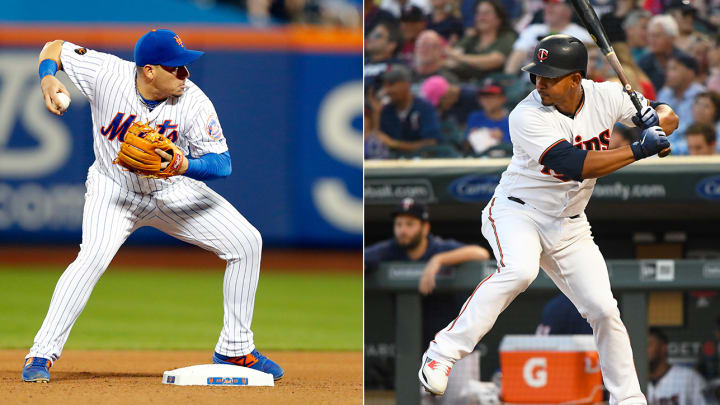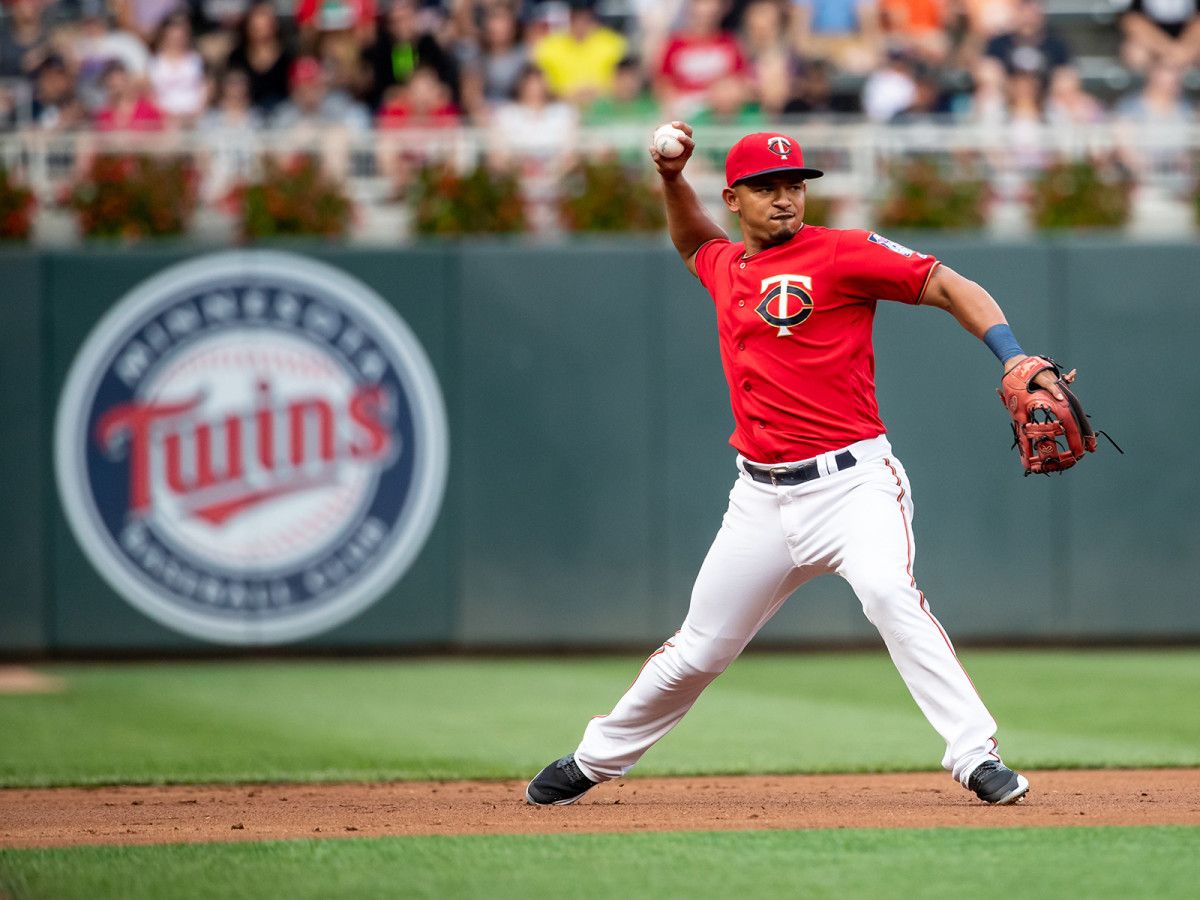Trade Grades: Phillies Pick Up Asdrubal Cabrera, Diamondbacks Reel in Eduardo Escobar

A busy trade deadline continued in earnest on Friday, as both the Diamondbacks and Phillies snapped up middle infield help to aid in the playoff push. Let’s round up and grade today’s pair of moves.
The Deal
Phillies get: 2B/SS Asdrubal Cabrera
Mets get: RHP Franklyn Kilomé
The summer selloff has claimed another name in Queens. A week after sending closer Jeurys Familia to the Athletics, the Mets are saying goodbye to the versatile Cabrera, who stays in division and joins the rival Phillies. In exchange, New York receives Kilomé in a one-for-one deal that makes sense for both sides.
Now in his 12th season in the big leagues, the 32-year-old Cabrera was one of the few steady bright spots in the Mets’ otherwise broken lineup. On the season, he’s hit .277/.329/.488 with 18 homers and a 124 OPS+ in 407 plate appearances; his 3.0 offensive Wins Above Replacement (Baseball-Reference edition) leads the team. A switch-hitter, he’s done better against righties than lefties this season but can hold his own against southpaws.
Consistency has been the name of Cabrera’s offensive game since joining the Mets before the 2016 season. Defensively, however, things have been shakier. A shortstop when he came to Queens, Cabrera was bumped over to second base last summer to make room for top prospect Amed Rosario—a position switch that angered him enough that he demanded a trade (though he ultimately retracted it). At short or second, though, Cabrera isn’t much to write home about. By Defensive Runs Saved, he’s in the negative at both positions—sharply so in the case of shortstop—while grading out barely positive at third base. Slow and lacking range, he’s a potential liability in the field.
Roundtable: Answering the MLB Trade Deadline's Burning Questions
Beggars can’t be choosers, though, and that well describes the Phillies at shortstop. Between rookies J.P. Crawford and Scott Kingery, Philadelphia’s gotten close to zero at that position: a collective .232/.279/.348 line and a wRC+ of 75 that’s tied for fourth worst in baseball. Crawford hit a miserable .194/.312/.333 before a broken hand suffered in late June landed him on the disabled list. Kingery, meanwhile, has slashed an equally uninspiring .236/.278/.341 in 367 plate appearances. Both have also graded out as poor defenders this year, albeit in tiny sample sizes.
Crawford and Kingery are the future in Philadelphia, but the present requires better production if the team wants to stay in first place in the NL East. To that degree, Cabrera should be a massive step up, even if his defense remains weak. If nothing else, he’ll make the Phillies’ lineup deeper as they grind toward October. He’ll also give manager Gabe Kapler more options around the infield, with the ability to move Cabrera, Kingery or regular second baseman Cesar Hernandez where needed. The return of Crawford and continued good play from third baseman Maikel Franco (.324/.368/.468 in the month of July) may create a bit of a playing time juggling act for Kapler, but that’s a good problem to have.
Bautista? Harper? Evaluating the Yankees' Options After Aaron Judge's Injury
As for the Mets, their return for Cabrera—a free agent at season’s end—is Kilomé, who came into the year as the Phillies’ No. 10 prospect via MLB.com and No. 68 in the league per Baseball Prospectus. A 23-year-old Dominican righty, Kilomé is a telephone pole of a human at 6’6” and 175 pounds, though he packs serious heat via a fastball that hits the upper 90s, as well as a plus curveball. The issue is command: Kilomé is walking 4.5 per nine in Double A, as well as posting subpar strikeout numbers—just 83 whiffs in 102 innings. “If Kilomé is to hit his No. 3 / 4 starter ceiling, many things will need to be ironed out,” wrote Fangraphs’ Eric Longenhagen before the season. A future in relief as a late-inning arm seems more likely unless the Mets can fix what ails him.
Even with that in mind, though, Kilomé is an intriguing get for the Mets, particularly after they received a light return for Familia from Oakland. He immediately jumps into the top five of their system and has impact potential down the road. This being the Mets, though, there’s an equal chance that he develops scurvy in the next six months.
Grades
Phillies: B+
Mets: B+
The Deal
Diamondbacks get: 3B/SS Eduardo Escobar
Twins get: OF Gabriel Maciel, RHP Jhoan Duran, OF Ernie De La Trinidad

Sometimes you find gold in the most unexpected places. Case in point: Escobar. An eight-year veteran out of Venezuela, the 29-year-old infielder was a player of no repute before the season—a utility man with not much of a stick or glove. But suddenly in 2018, the free-agent-to-be has blossomed into a line-drive machine, with a .274/.338/.514 line and a league-leading 37 doubles to go with 15 homers, a 129 OPS+ and 2.6 Wins Above Replacement. Those are all career-highs, as you can imagine, and about as expected as a blizzard in August.
THANK YOU Minnesota! I want to say thank you to my family, Twins front office, teammates, coaches, trainers and friends who day after day supported me and challenged me to be a better baseball player, a better person. Know that the Twins will always mean a lot to me. Wearing > pic.twitter.com/PGCdgbRj4Q
— eduardo jose escobar (@escobardelapica) July 27, 2018
To what can we attribute this sudden surge? A good offseason plan? Better nutrition? A chance meeting with Nicolas Cage on a beach in Puerto Rico at the end of April? (No, seriously, that happened.) There’s been no significant change in Escobar’s batted-ball profile or swing rates from last year to this season, and he’s nothing special by exit velocity. The biggest difference is in his walk rate, which jumped from 6.6% last year to 8.3% in 2018, and his production against fastballs. Against heaters, Escobar has gone from a meager .250 batting average and .444 slugging percentage in 2017 to .286 and .519, respectively, this year. That, plus a huge spike in batting average on balls in play (.279 to .325) probably helps explain more than anything else his transformation into Peak Robin Yount.
Eduardo Escobar Is the Latest Success Story of the Launch Angle Revolution
Whatever’s behind it, the Twins cashed out on it, and the Diamondbacks will have to hope it sticks. Given the sorry state of the left side of their infield, though, just about anything positive from Escobar will be gravy. Regular third baseman Jake Lamb and shortstop Nick Ahmed have been awful this season: The former has hit .222/.307/.348 with only six homers in 238 injury-interrupted plate appearances, while the latter is at .234/.287/.437 in 364 trips to the dish. Their respective OPS+ marks are 70 and 85, though both have at least somewhat made up for that with solid defense at each position.
Still, an upgrade at either short or third was needed to keep Arizona—sitting behind the Dodgers for second place in the NL West by 1 ½ games entering play on Friday at 56–48—in the division hunt. That’s especially the case with Lamb heading to the DL with a left shoulder contusion. For now, Escobar—who played primarily shortstop to start the year for the Twins, then moved to the hot corner after Miguel Sano’s demotion in June—will get the lion’s share of what was Lamb’s playing time at third, though he’ll probably play a lot of shortstop too. He could also be a super-utility type, though his shaky defense doesn’t make him a perfect fit for that role. As a switch-hitter, though, he’s an ideal platoon partner both for the lefty-swinging Lamb (who gets eaten alive with mint jelly by southpaws) and the righthanded Ahmed (who is awful against righties). Escobar is a nice depth pickup and a better option at third or short than Lamb, Ahmed or veteran Daniel Descalso.
Will It Work? A Week With the Mariners as They Try to End the Longest Playoff Drought in Pro Sports
The cost wasn’t cheap, though. Of the trio heading to Minnesota, Maciel is the highest ranked, checking in at No. 11 for Arizona on MLB.com’s preseason list. Still early in his career at 19, the Brazilian outfielder is a terrific fielder and has plenty of speed, as well as a decent eye at the plate. He offers little to no power right now—a .333 slugging percentage in A ball—but he has plenty of time to develop that as he matures. If nothing else, he has the tools to be a starting centerfielder and leadoff hitter. Duran is the other intriguing name, as a 19-year-old righty out of the Dominican who can hit 99 mph with his fastball. Tall and thin, he’s a ways away but has tons of potential. The third piece, De La Trinidad, is 22 and a 2017 draft pick who’s put up a gaudy .311/.403/.442 line alongside Maciel in A ball and has a 70-grade name.
That’s a lot of potential the Diamondbacks are giving up, but both Maciel and Duran are years away, and a lot could happen in the interim. Arizona needed the help now and paid the price for it, though there’s a decent chance this move could sting down the road, especially if Escobar regresses upon switching leagues.
As for Minnesota, it’s a nice package for a pending free agent. More important, though, is that moving Escobar is as clear a sign as any that the Twins are in the seller camp ahead of the deadline. They offer plenty of rental pieces—Brian Dozier, Lance Lynn, and Fernando Rodney in particular—who could be of real help to contenders, positioning Minnesota as a power broker heading into July 31. It’s a bummer to see them fall so quickly from last year’s heights, but the Twins will reset their sights on the future after a disappointing first half sunk their 2018 hopes.
Grades
Diamondbacks: B
Twins: B+
